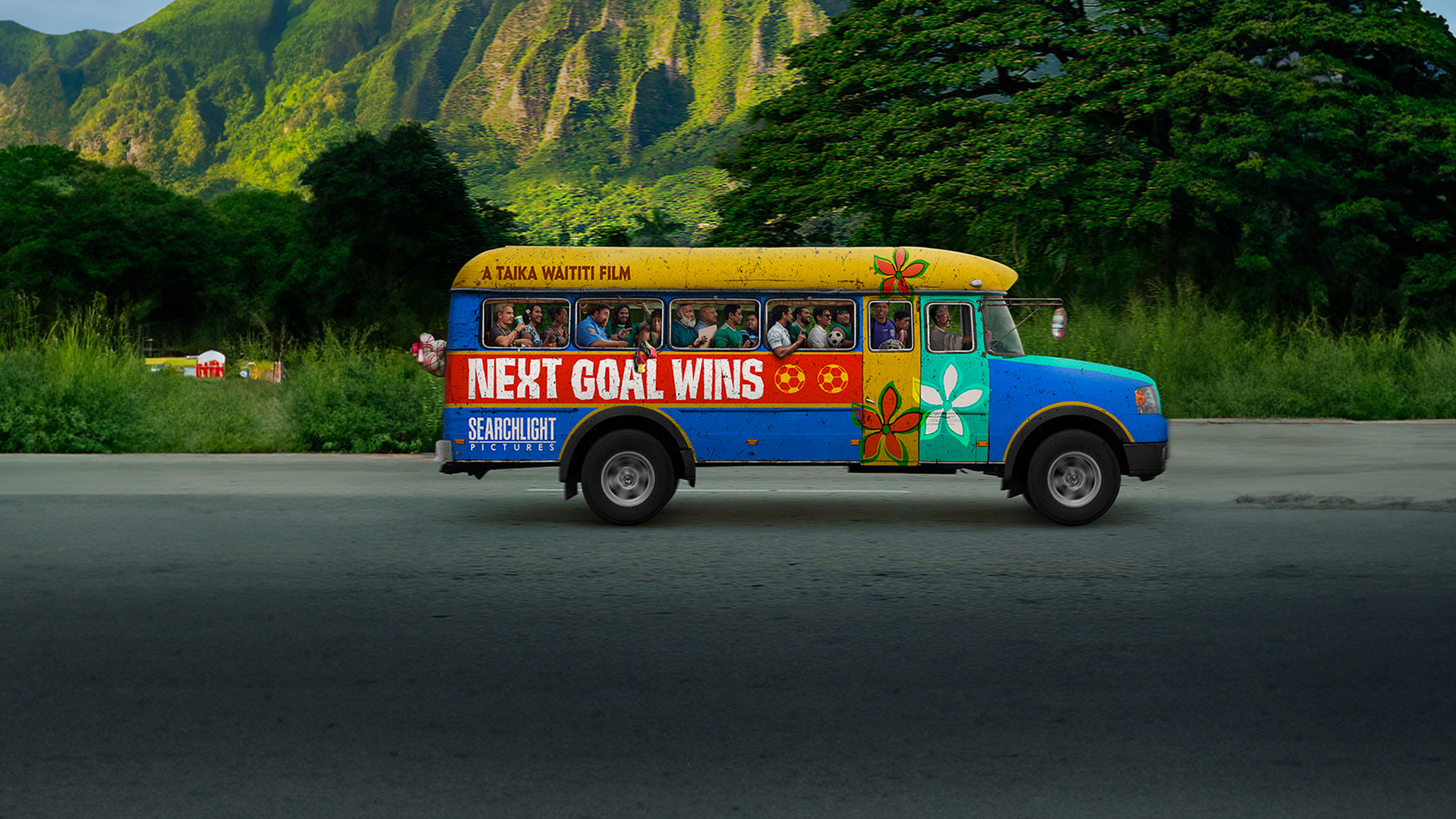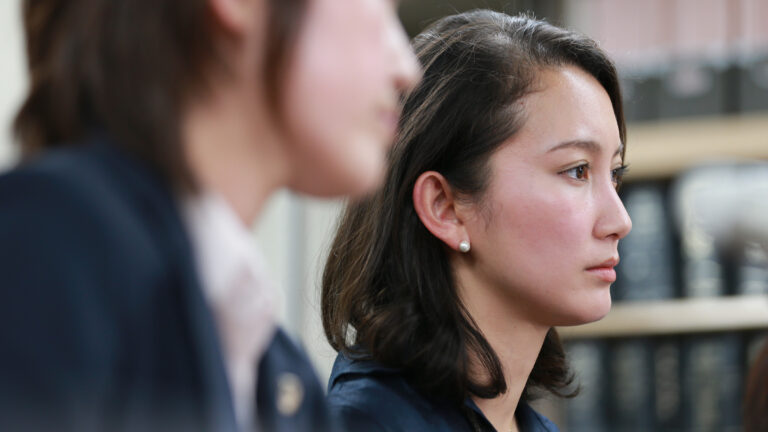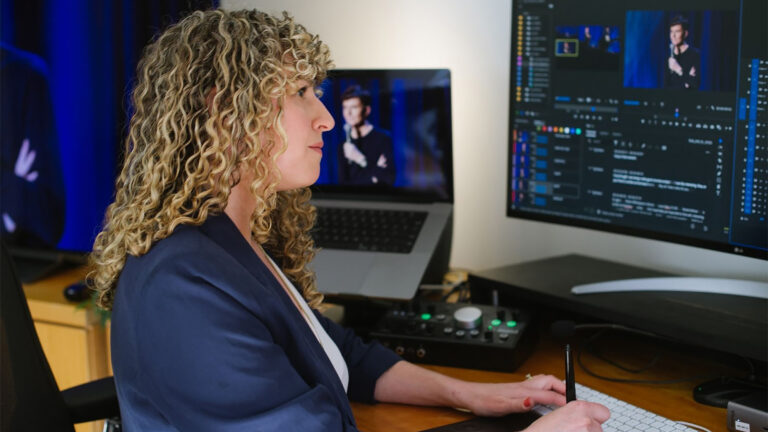Next Goal Wins editor Tom Eagles, ACE first made a name for himself with his ACE Eddie-winning work on Jojo Rabbit (2019). That film would also get Tom an Oscar nomination for Best Film Editing. With Next Goal Wins, Eagles is once again in the cutting room of a Taika Waititi film. Tom joined editors Nat Sanders, ACE, Nick Monsour and Yana Gorskaya, ACE for the “sports comedy with a heart”.
Next Goal Wins plot summary
Based on the 2014 documentary of the same name by Mike Brett and Steve Jamison, Next Goal Wins is about a Dutch American coach’s efforts to lead the American Samoa national football team, considered one of the weakest football teams in the world, to qualification for the 2014 FIFA World Cup. The storyline also includes fa’afafine player Jaiyah Saelua, who was the first non-binary player ever to compete in a World Cup game.
In our discussion with Next Goal Wins editor Tom Eagles, we talk about:
- Adding a character to give the film character
- Coming and going on the cutting crew
- Needle dropping Dolly
- The dailies delights of improv
- Taika Waititi – couch surfer
Listen while you read…
Editing Next Goal Wins
Matt Feury: Tom, the last time we spoke, you were working with Jeymes Samuel on The Harder They Fall, which was his directorial debut. But the movie we’re talking about today, Next Goal Wins, you did with Taika Waititi. He’s someone you have a lot of experience working with. You worked with him on Hunt for the Wilderpeople and Jojo Rabbit.
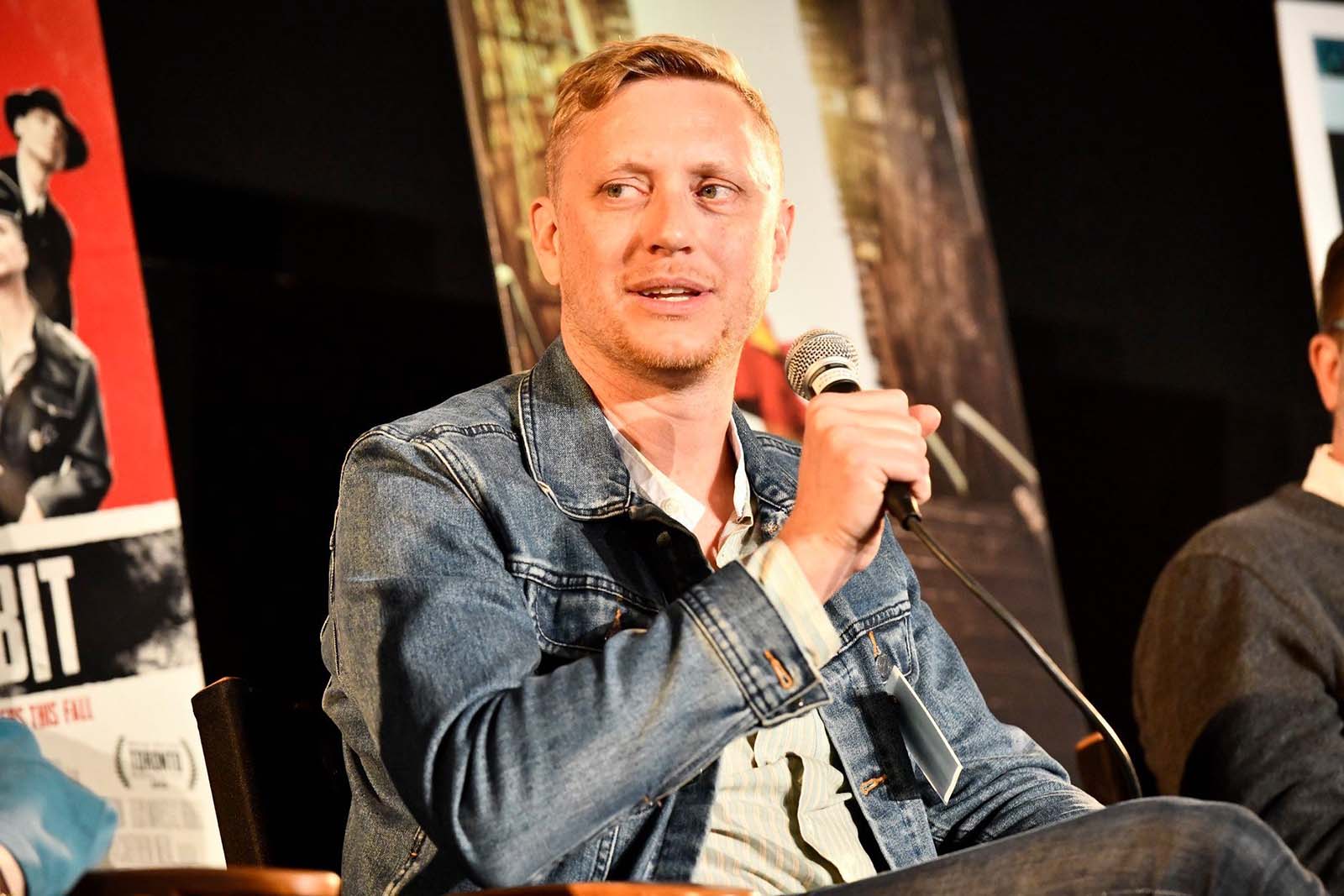
How does working with Taika, with whom you already have a lot of history, compare to working with a director who’s new to you? Are there certain aspects of the process that are just faster? Can you be more direct with one another in terms of feedback? How does that work with Taika compared to any other director?
Tom Eagles, ACE: It is faster. I don’t know if there’s a shorthand, but I’m probably bolder with Taika than I might be with someone I’m working with for the first time. Like you said, James and I have just done our second film. I’m pretty bold with him, too. But with Taika, it pays to put your best foot forward and try and make the cut as good as you believe it can be.
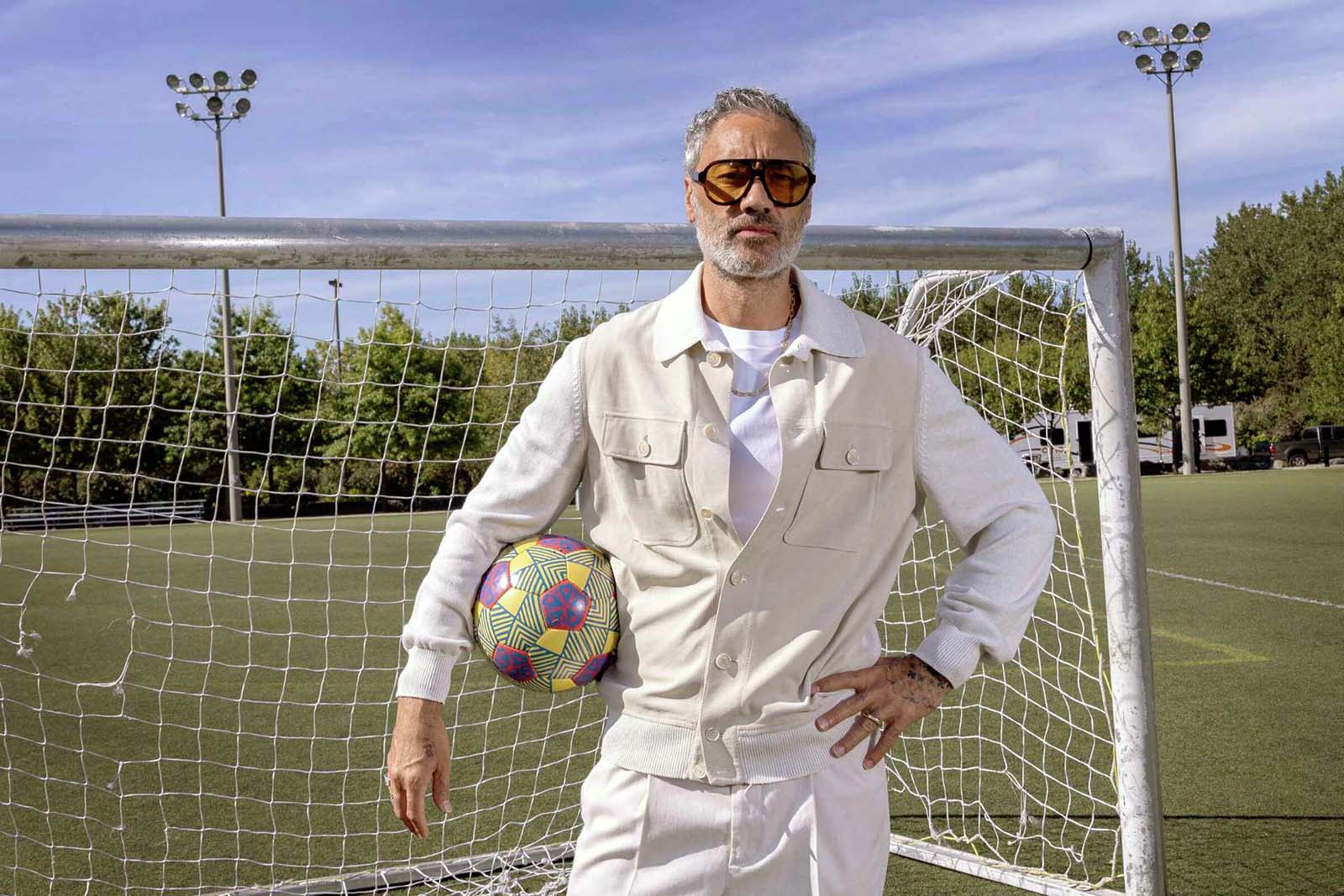
Sometimes, even on a first assemble, I’ll drop scenes, which we will have talked about beforehand. On this film, I was coming in a little bit later and people had already tried a variety of things. It felt low risk, like I could try whatever I wanted and either he likes it or he doesn’t.
By working with him, I’ve learned that you have to make a lot of offers. It’s the same way that he works with actors. People throw in a lot of improv. As an editor, you have to keep throwing ideas at the wall until something sticks. When he likes something, he’ll pick it up and run with it.
As an editor you have to keep throwing ideas at the wall until something sticks.
MF: Part of working with Taika as an editor seems to be mastering the art of collaboration. He frequently has the material pass through the hands of multiple editors, most often you and Yana Gorskaya. Are there things that you do to make it a more seamless process?
Tom Eagles, ACE: I always try to talk to the other editors. Nat Sanders was the person who I tried to collaborate with on this. He’d been on just before me and I asked that they bring him back onto the movie because I only had a certain window of time. Also, having five editors is crazy, so I tried to keep up communication with him.
You’re there for your fresh eyes and you want to make your own impressions first. But at some point, it’s good to go back to the other editors and ask, “Is there anything that you just couldn’t quite figure out? Any challenges that you foresee? If I go down this route, am I wasting my time?” Communication is key in that regard.
MF: When you join a project that’s in process, do you move into the post facility? Were you at home with a local copy of the project and media? How does it work from a technical standpoint to jump in midway?
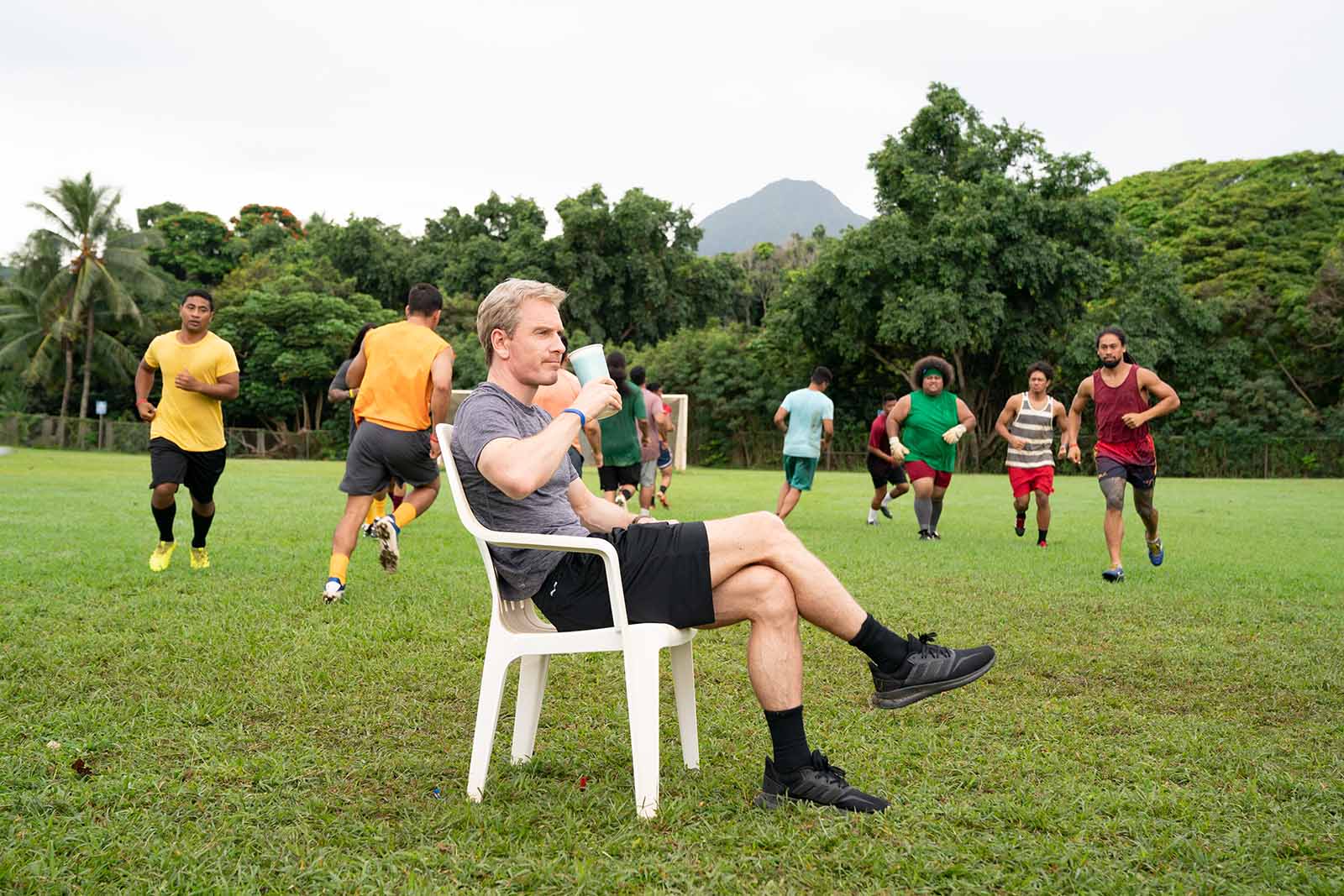
Tom Eagles, ACE: It can work in a lot of ways. For this one, yes, I moved into Digital Vortechs in Echo Park. They had a couple of suites. Aaron Brock, who was assisting, worked from home. It was just me in a little office in a wing of Vortechs with a couple of other productions going on around me. I just picked up and ran with what was there.
MF: Seven years before this film, there was a documentary of the same name called Next Goal Wins. It told the story of a soccer coach, Thomas Rongen, trying to help the historically bad American Samoa soccer team qualify for the FIFA World Cup.
When I say historically bad, for people that don’t know, they once lost a match to Australia, thirty-one to nothing. So, it was no small feat to get them to qualify. Did you watch that documentary as part of your preparation to work on the feature? What other things might you do to prepare for a project?
Tom Eagles, ACE: I did watch the documentary. That was one of the few bits of prep I did because I was coming in late. I didn’t have a lot of time. I met those guys. The first time I became aware of this project was way back when we were cutting Hunt for the Wilderpeople.
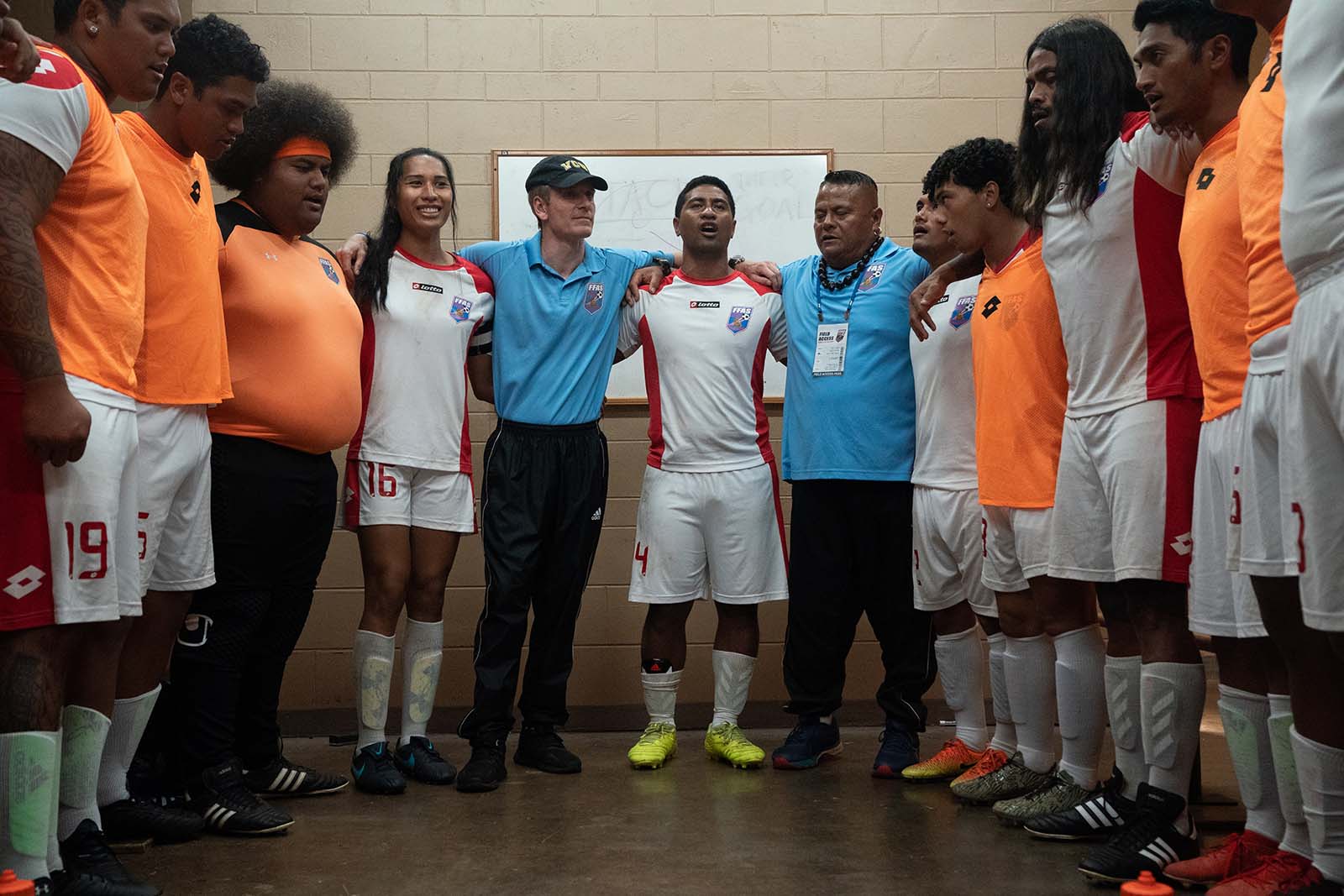
We were in Hawaii and these two British guys turned up. I remember shooting pool with them for a bit, and I couldn’t figure out who they were or why they were there. They turned out to be the directors of the documentary and they’d come to pitch Taika to do his version of the story.
I remember our producer at the time saying, “He’s got so many projects that it will probably never happen.” But flash forward, and here we are. I watched the documentary and I wasn’t too attached to the particularities of the story.
I wanted to get a vibe of who Thomas Rongen and Jaiyah were. They’re based on real people, so I felt like it was at least respectful to find out who those real people were, whether we were going to adhere to that or not. You need to know the material and know what you’re dealing with.
MF: I know you’re so close to Taika. Will he send you a script to get your thoughts on what scenes might be in the final product?
Tom Eagles, ACE: He has in the past, but not on this one. We were working on Jojo Rabbit when he was prepping this, and then I had another film back in New Zealand that I was going on to. I just couldn’t read another script while I was cutting that movie. I don’t think I went back and read the script.

When I got onto Next Goal Wins I was interested in what the material was. I remember there was a lot of improv. I had the cuts that had already been done, so I looked at a bunch of them. I don’t remember sitting down and reading the script.
MF: The film opens with what appears to be archival footage of the real American Samoa soccer team. Was this from the documentary? Was it sourced from somewhere else, or was this new footage made to look like archival?
Tom Eagles, ACE: It was from the documentary. I don’t know where they got it from. I guess they got it from whoever was screening the game at the time. Then we match cut to Nicky Salapu, but it’s our vision of Nicky, played by Uli Latukefu. The shot starts wide and then you get close and see him collapse on the ground. That’s what bookended the movie. It was important to see our Nicky towards the end of that montage.
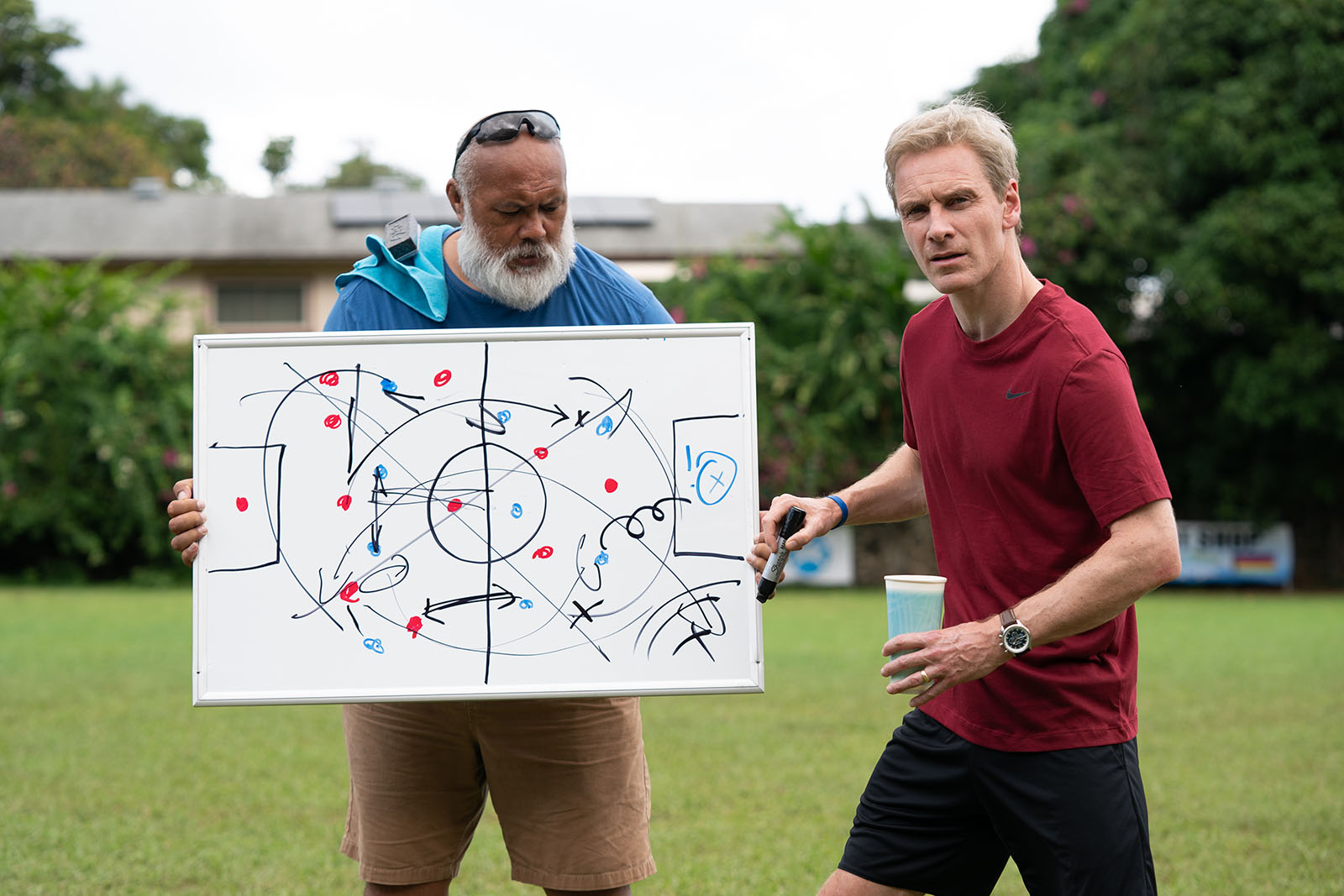
MF: In a sports or action movie, you’re going to have these set pieces. But sometimes within a film, you have what I call editorial set pieces in the form of commercials, PSAs, or training videos. It’s short-form content that’s there to provide exposition or color instead of longer dialog scenes.
In this movie, there’s a “Welcome to American Samoa” travel video. If you’re trying to tighten the movie, that’s an obvious candidate for cutting, but it adds comedy and context to the movie. Did you work on that element and was it ever at risk of being cut?
Tom Eagles, ACE: I did not work on that, but I thought it was brilliant. That’s the work of Nick Monsour, who was the first editor on that. It possibly went through a few permutations. There were longer versions of it.
People don’t know a lot about Samoa. They don’t know the difference between Western Samoa and American Samoa. It was useful to have a little intro and to do that in a comedic way. Everything’s a candidate for cutting, but we probably just cut that down. I don’t think there was ever a time when I seriously considered dropping it.
MF: Taika opens the film almost as if he’s going to be the narrator. We see him first and he’s setting the film up, and then we hear him later. We see him on screen as a priest involved in the story. Was there ever a version with more of him in it?
Everything’s a candidate for cutting.
Tom Eagles, ACE: I definitely remember that being talked about. We tried a few versions, but it just felt like it dropped you out of the story. We wanted to stay the characters that you’re interested in, namely Jaiyah, Thomas, and Tavita.
Taika did a lot of improv just in that one location and the temptation is because it’s so funny, you want to use it. But it wound up not serving the story. Seeing everything in this third-person narrator view pulled us out too much. It was better to use him to bookend the movie.
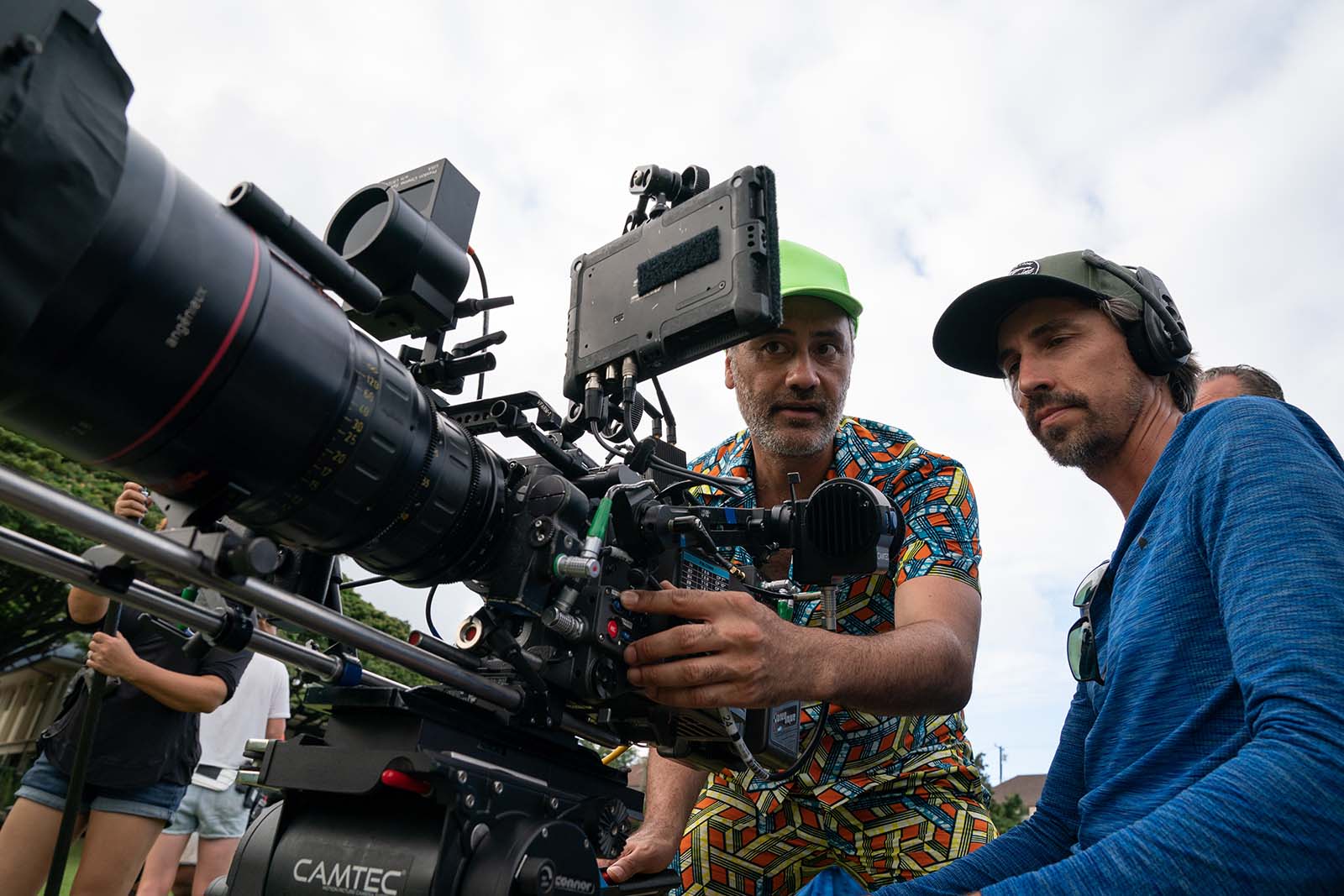
But like you say, he comes back in the middle and we realize that he’s a real character in the film. In this biblical parable that he’s telling us are scenes of Thomas being baptized by fun. A lot of people watch that and go, “I wish there was more Taika!” The right response for me is to leave them wanting more.
MF: Well, that was me. I wish there was more Taika, But you’re right, it made for a better movie. The way you introduce the character of Thomas is in one of my favorite scenes in the film, what I call the “Five Stages of Grief Scene”.
With an overhead projector, they walk him through the five stages of grief that he is playing out as he finds out that he’s not going to be able to continue working in the way he wants to. He has to go help this team. It’s a very funny scene and I just love to know about how you put it together.
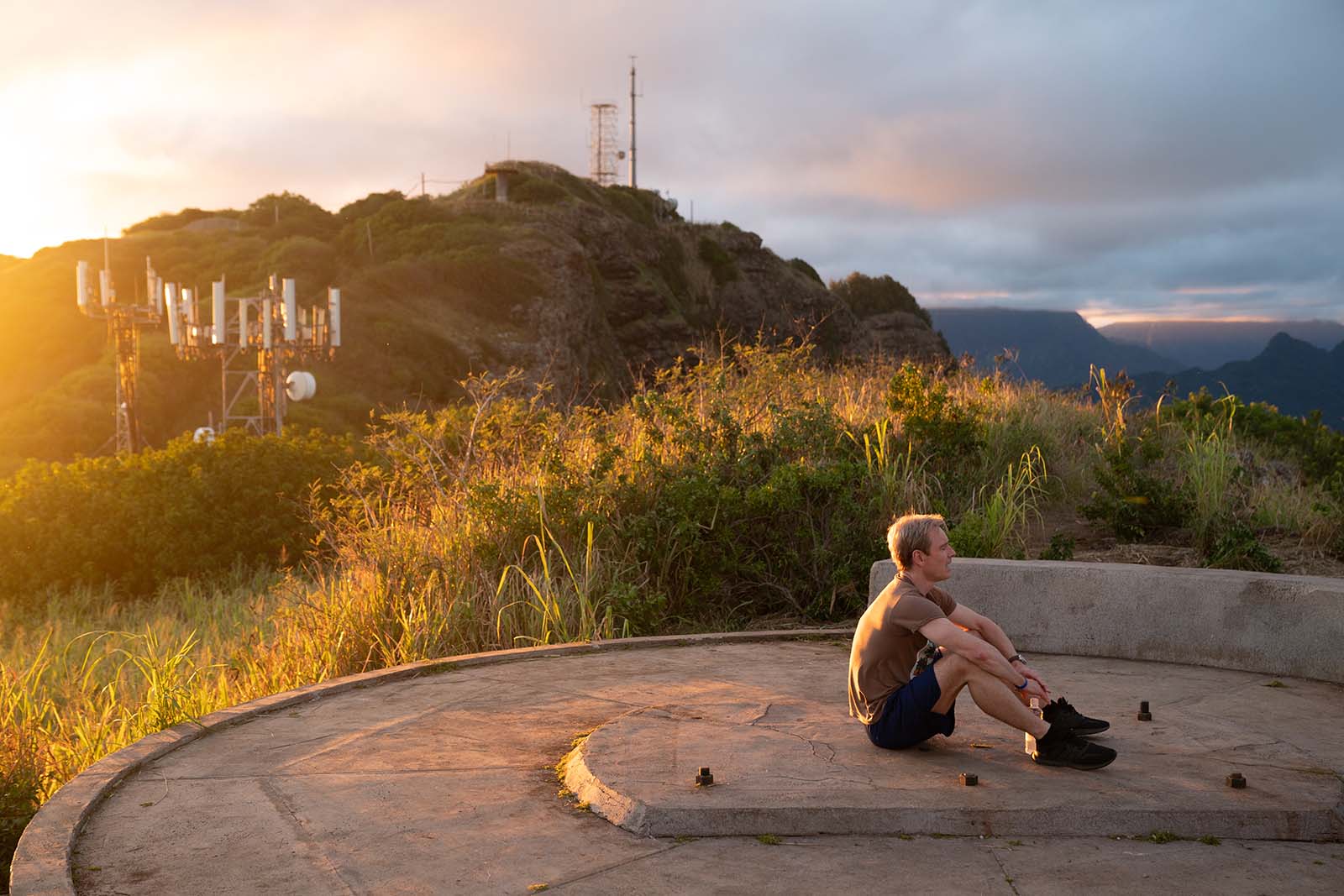
Tom Eagles, ACE: That was another scene that had a lot of permutations because there was a lot of great improv from everyone. But in the original long version, we went through all five stages of grief in some detail. It was funny, but it held the story up too much.
That scene was shot as a pickup originally. The story started with the Samoan team and you didn’t meet Thomas until he stepped off the plane. It became apparent that we needed to know a little bit about Thomas. We did more work on that front through the movie, but establishing where he’s at in his life and his career was important.
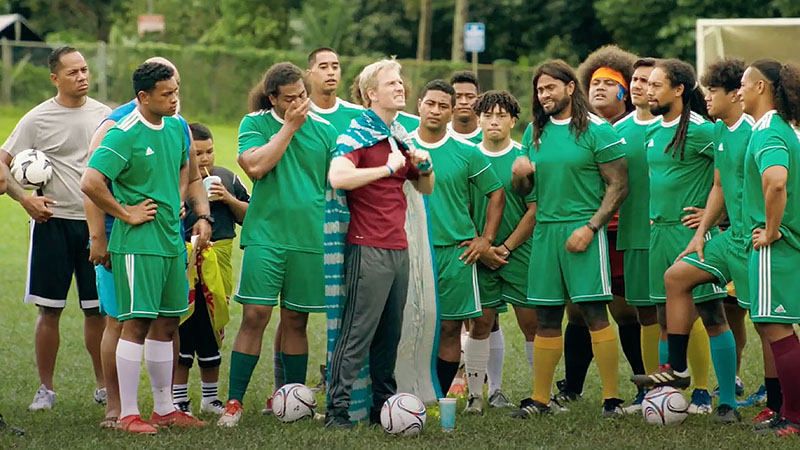
MF: When I interviewed you for The Harder They Fall, we talked about how you put a page of your handwritten notes up on social media. It was fascinating to see how you were thinking your way through the scene before you went after it. You also have a cork board with your scenes broken down on it. You can physically move the scenes around if you want. You use this method to pitch different structures for the film to Taika. Tell me how and why you do that and what you get out of doing it that way.
Tom Eagles, ACE: One of the first things I did when I came in was to get the cork board going. I find it useful to be able to abstract out the film on the wall. It breaks you out of the structures of what every scene currently is and gives you these little units of meaning that can be reshaped and reordered to find the best story.
I played around with a lot of structures for the second act. The second acts of Taika’s films are often quite fluid. Sometimes they start out episodic and it’s driven by comedy, and then you need to find a way to arrange those scenes to best tell the story.
MF: Knowing he works that way, what is your approach? Do you look at a scene and think, “Regardless of what I have here, what is Taika’s intent and how do I get him there?” Or do you look at the material and see what’s the best performances?
Tom Eagles, ACE: That’s the starting point. I never come in going, “I’m going to have to restructure everything and rework everything.” I look at what’s there and assume that the script order is best. Then, as I go on, I find that there are other possibilities.
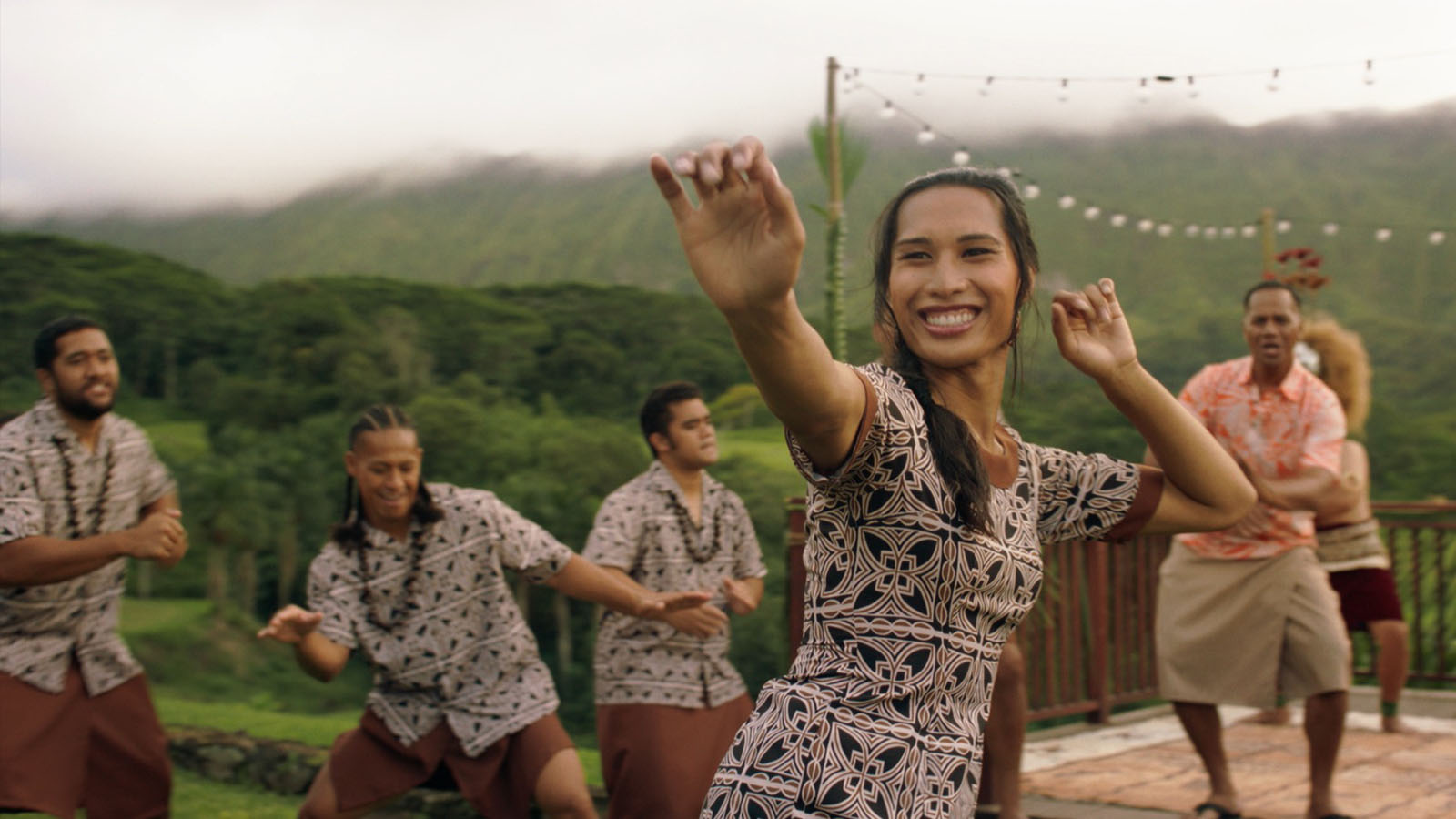
Rongen’s stepdaughter Nicole (played by Kaitlyn Dever) broke this film open for me. She hadn’t been in the movie prior. There was this amazing scene in the second half of the movie where Rongen breaks down and tells the team about Nicole, who died some years earlier. We wanted that to be a surprise but it felt like it came out of nowhere. It felt like, without some hints, Rongen was just this racist, misogynistic homophobe. He was just this horrible, horrible guy and you didn’t have a handle on him.
I realized that we had a couple of scenes where he was on the phone with his wife Gail (Elisabeth Moss). We could voice the character of his daughter that he’s listening to in these messages. I mentioned that because once those came in, they shook up the structure of the movie.

Often, we would come out of conflict between Rongen and Jaiyah and go to those scenes to try and propel him into some change. That change might be turning up to practice for the first time or coming back to practice once he’s thrown a tantrum and rejoining the team. We also had pickups as well. Those are likely to shake up the structure a little bit.
MF: The character of Jaiyah is a real person. She’s the first non-binary player to play in a World Cup game. That in and of itself is worthy of a story. There are a couple of movies you could have made from this story. How did you balance that versus keeping the story about the team as a whole?
Tom Eagles, ACE: I listened to Jaiyah. I thought she was a very interesting character, but the most interesting relationship in the movie was between her and Rongen.
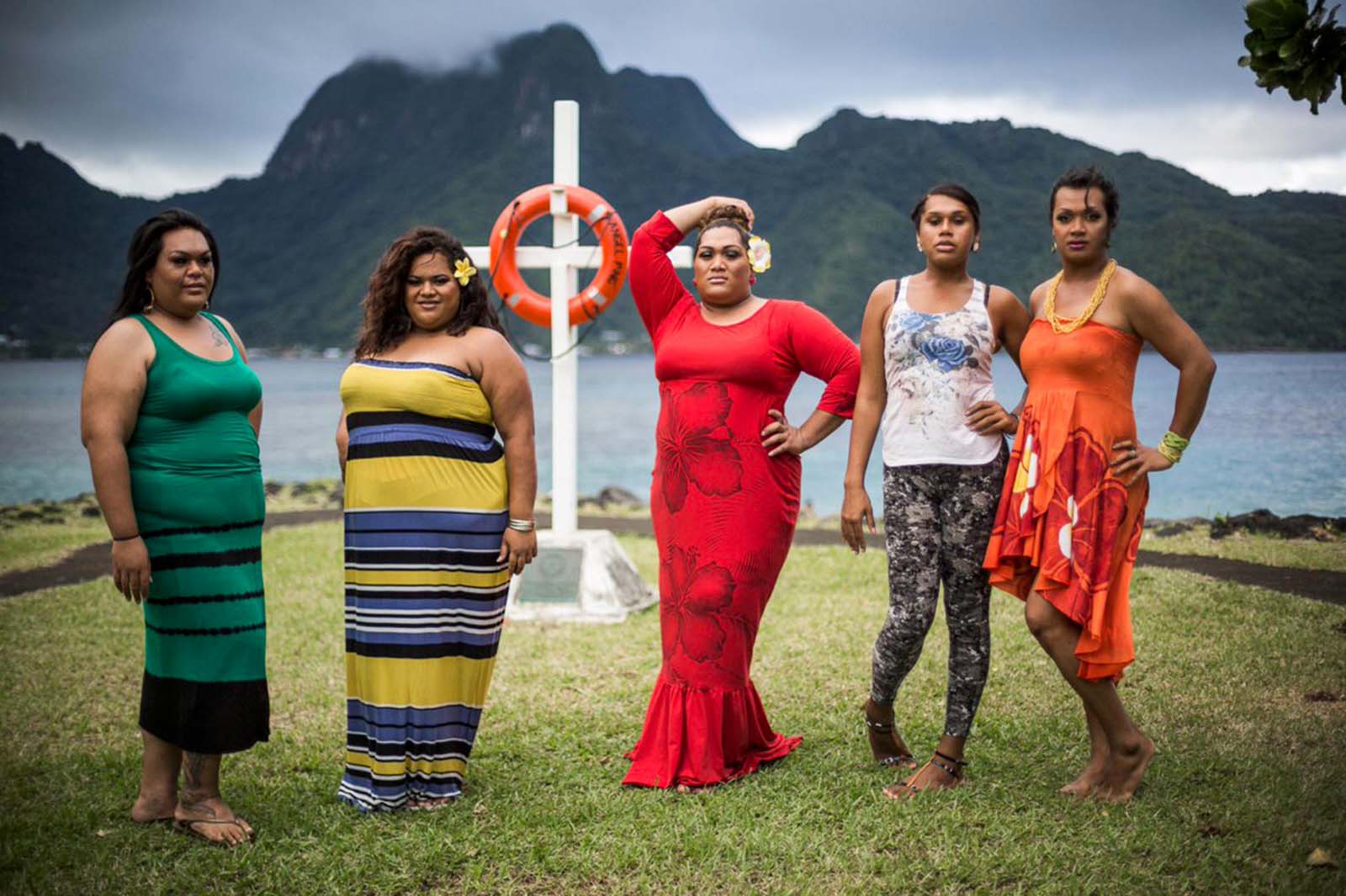
When I got in, I threw everything that I could find of her into the movie. We came back on that eventually. A couple of things came out. But part of my path was to make her almost a secondary protagonist, someone who matters to the film. The film is partly from her point of view and broadly from a Samoan point of view, as well as from Rongen’s point of view. I leaned into her.
I also had to make sure that Rongen attitude towards her wasn’t represented as the film’s attitude towards her. Just very little things, like when he’s having his transphobic rant about My Little Pony, or cutting to some of the other team members showing their distaste and distrust of him, give the viewer a perspective that this white guy’s perspective on a fa’afafine is not the perspective of the film. It’s not the perspective of the team either.
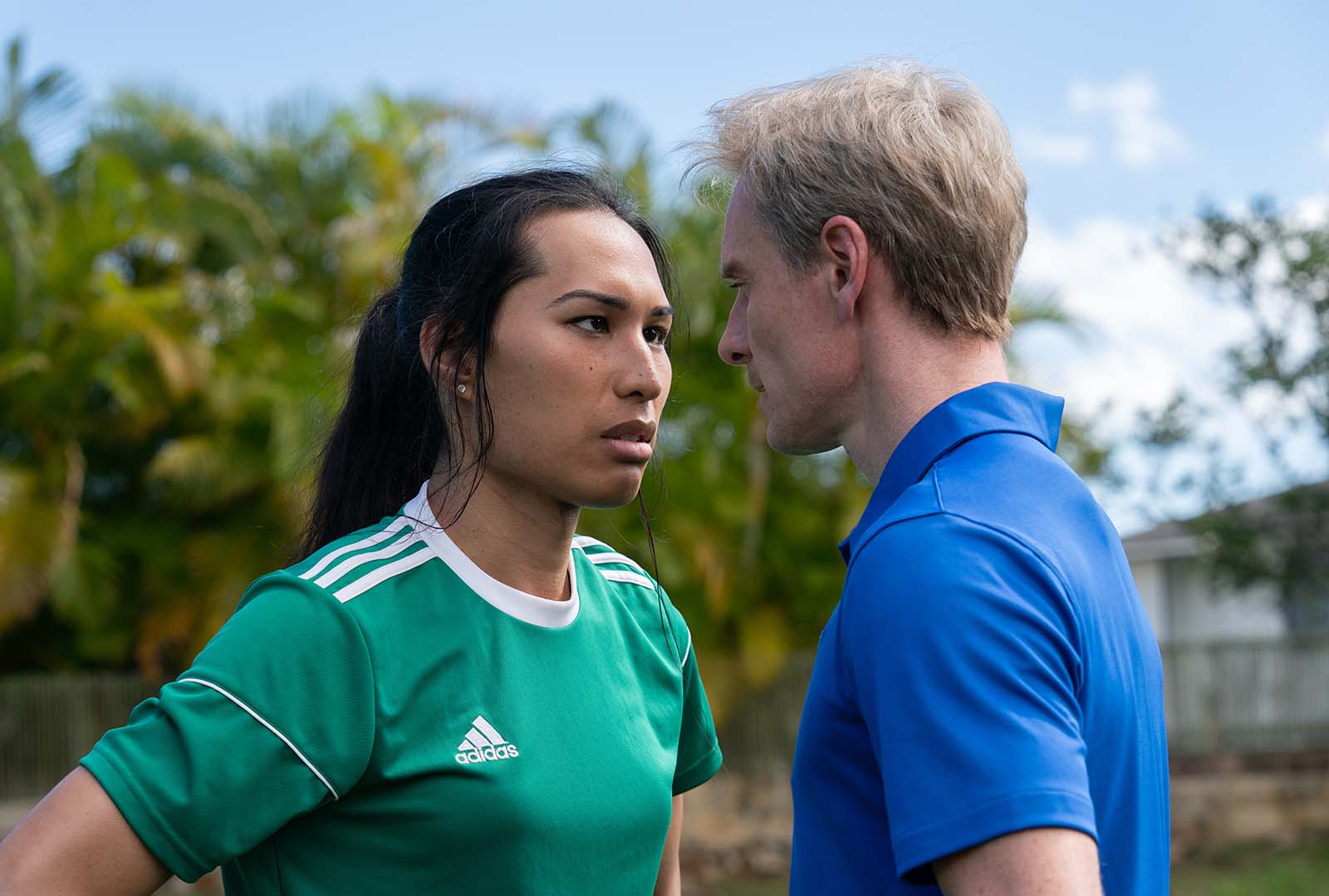
On a similar note, how do you make room for an ensemble cast? The cast comprises a whole soccer team and the tight-knit community of supporters that they have. To give all these characters their time and space, you sometimes have to make sacrifices and lose great moments or performances. Tell me how you approach that aspect of it.
Tom Eagles, ACE: That’s always tough with a big ensemble like this. Oscar Kitely’s character, Tavita, was important. He’s the guy who hires Thomas in the first place. He’s the guy who has the problem of the worst soccer team in the world.
Nicky Salapu was also important. He is the guy who missed thirty-one goals but ultimately turns out to be the team’s savior. We established him just enough so that it would be a surprise when he came back into the movie, but it would be satisfying and not a complete wildcard.
There were so many good performers. It’s always hard to give everyone their due, but it’s a team movie and you need all of those different characters. Semu Filipo, who plays Rambo, is a great comedic actor. A lot of them buy their time on screen by being great performers.
MF: It is a sports comedy and by the law of sports comedies, you are required to have an up-tempo training montage. For whatever reason, Jesus Christ and Dolly Parton are influential figures in American Samoa. I don’t think we ever get quite to the bottom of that in the movie. But as a result, the montage is done to the song “Nine to Five”. How is something like that scripted? How much material are you given to create what ends up being a one or two-minute sequence?
Tom Eagles, ACE: The funny thing about that is Dolly wasn’t in the movie. That used to be Elvis in those picture frames. It was Jesus and Elvis, who is definitely a big character in the Pacific.
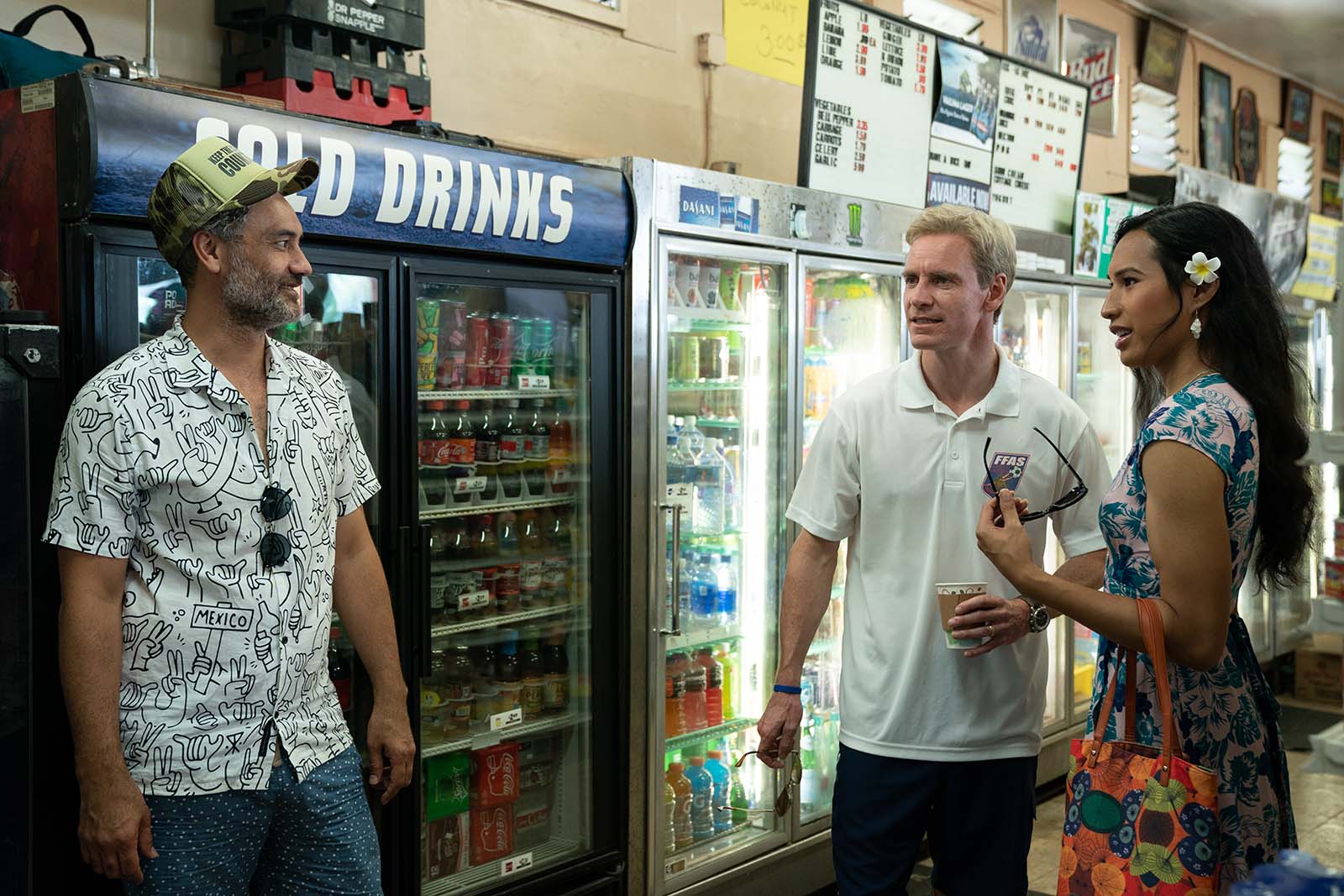
I auditioned so many tunes for both of those training montages. There was a magic moment where I threw “Nine to Five” on and the lyrics, “We’re just another step on the boss man’s ladder” just happened to be while they were doing the ladder sequence. Then, “That man is out to get me” landed when Thomas is giving Jaiyah an evil look. It just felt like it was meant to be. That’s what you hope for when you’re syncing music.
There was a ton of material shot for both montages. It was always intended that there would be two, but what winds up in which montage is dependent on what story we were trying to tell. The first montage is about Thomas joining the team and the second montage is about Thomas accepting that he’s part of the team and the team accepting him. The first montage is the very typical “tough cop” thing. He’s being tough on the players. In the second one, he’s a little bit more part of the family. They’re all working together.
MF: You caught lightning in a bottle there with the lyrics of “Nine to Five” playing out perfectly against what’s happening with the team. Let’s expand on that a little bit. What is Taika’s process for needle drops? Is he very prescriptive or does he leave it up to you and the music supervisor entirely?
Tom Eagles, ACE: On this one, he left it up to me. There had been a few iterations and one of the things that bothered me was there was no Samoan music. When I came on, I worked on the opening of the film trying to get this Jerome Grey tune “We Are Samoa” to play over that opening montage. It almost feels like a national anthem and it cuts beautifully, ironically, against them being smashed by Australia.

Then there’s the LEAO tune, “Musika Malie”, a massively covered song in Samoa and throughout the Pacific. It’s a well-known song, but finding an upbeat version of that was tough. There are all these great groups from Samoa from the ’70s and ’80s that felt like they resonated with Taika’s style, his tone.
Anytime I work with a director, I treat them as a genre. I try to figure out what the tone of that genre is. That was part of the brief, to make the movie feel more Taika. The music played a big part in that. “Everybody Wants to Rule the World” was an old idea that was trying to get into Jojo Rabbit with the training montage in that movie. It was a recycled idea that came back later.
Anytime I work with a director, I treat them as a genre.
MF: Let’s talk about the score a little bit and working with composer Michael Giacchino. When you are joining a film in progress, how does that change the way you work with a composer?
Tom Eagles, ACE: I didn’t have a ton of interaction with Michael compared to Jojo Rabbit, which I was on from beginning to end. We would go out to his studio, listen to demos, and give a little feedback. By the time I came on this one, there was a fair bit of score done. The score was working beautifully for the whole back end of the movie. I only replaced the score sometimes with needle drops near the beginning to give the film more of a Samoan feel. That was probably my only net effect on the score, removing something. Sorry, Michael.
MF: I think he’ll get over it.
Tom Eagles, ACE: I think he’s going to be okay.
MF: You know, you’re not the only one active on social media. In 2019, Taika tweeted, “Happy Halloween. I’m in this nightmare hellscape of my own creation and it’s called ‘Still finishing a script three days before principal photography’. (Full tweet below.) How do you manage something like that knowing that he’s still writing the script? You said there was a lot of improv on set. Does that make your job a little more cumbersome?
Happy Halloween I'm in a nightmare hellscape called "finishing a script 3 days before principal photography" I hope you enjoy your dumb parties u will be forgotten whereas I will be immortalised in a book about kiwi film makers active between 2005 and 2020. Insert pumpkin emoji. pic.twitter.com/eBlscaCCct
— Taika Waititi (@TaikaWaititi) November 1, 2019
Tom Eagles, ACE: It can. A lot of editors get very excited about improv because it’s new. You never saw that line coming. It’s like opening up a box of chocolates or a little gift every morning when you get your dailies. It’s very tempting to push the improv, but oftentimes you find the scripted stuff tells the story a little bit more succinctly.
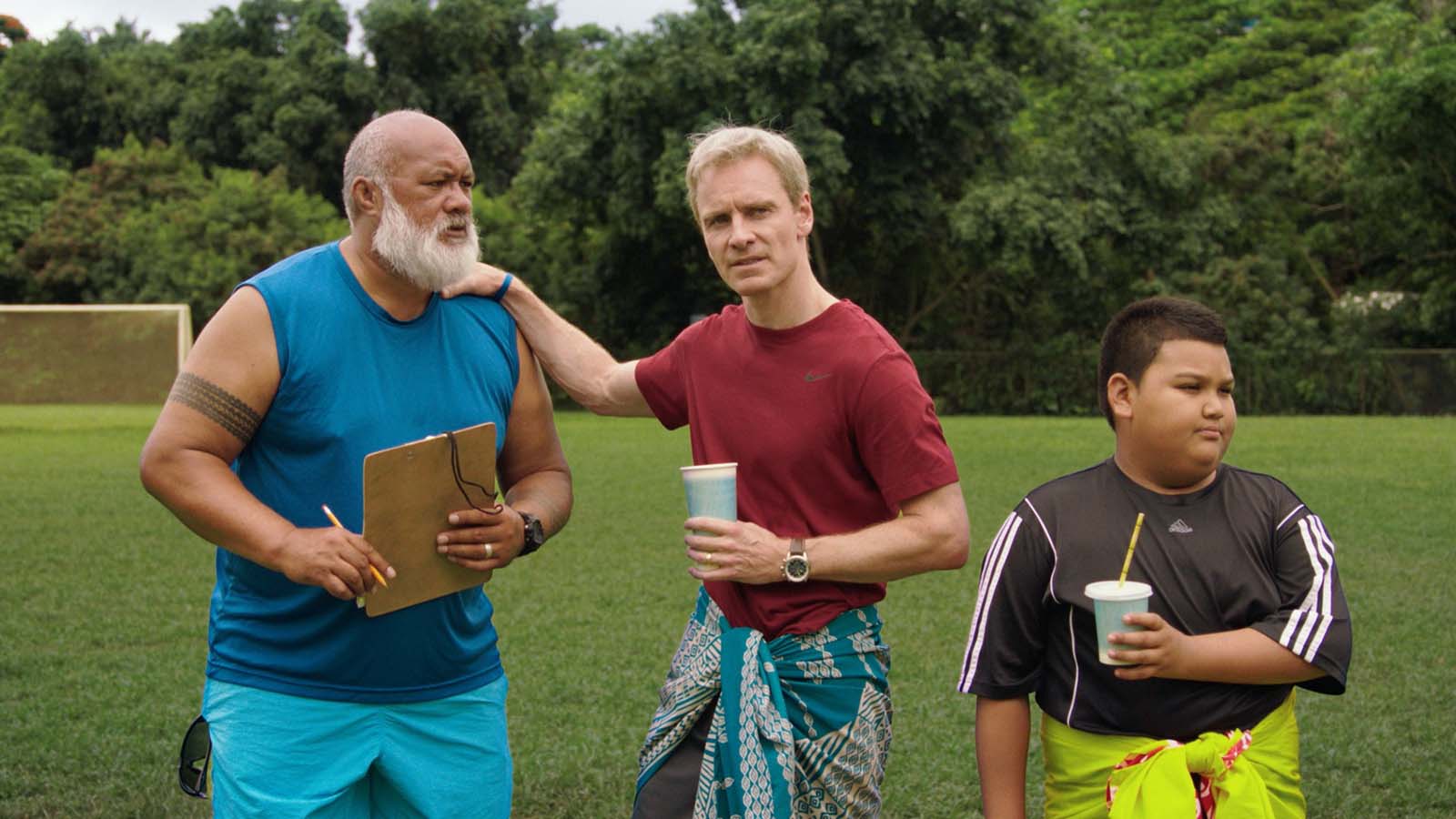
The challenge with improv is how to keep the story moving and make sure it says the things that it’s supposed to say. Sometimes you find there are incredible improvs, but they don’t go anywhere. You get a great improv on one side and you don’t have any response or reaction on the other side of it.
It’s like a choose-your-own-adventure novel. I start by throwing the things I like in a timeline and I’m then on the lookout for things that will make their improv work and tell the story that needs to be told.
The challenge with improv is how to keep the story moving.
MF: You mentioned that there were two montages. That reminded me of the challenge of cutting action in a sport. How tightly is the blocking of a soccer match constructed during production? How much of a challenge is it in post when you’re trying to find things that match and it just never matched on the day when they shot it?
Tom Eagles, ACE: There were beats that they tried to get and then there was a lot of just wild football play. Often, the key beat on the ball would be shot and then we had to find reactions or movements that might lead up to that shot. That was the puzzle. Even going back to the practice matches, we had the key moments and then had to construct the scene around them.
MF: I wonder how much of this might be done digitally. When I talked to the editors of Ted Lasso, they said, “Sometimes we have to put the soccer ball in digitally to make it work.” Did anything like that happen here? Or is everything practical?
Tom Eagles, ACE: Only occasionally. There are two examples that I can think of. One was a stunt where a couple of players get hit in the head by the ball and it ricochets in a way that you could never capture. That would have taken a hundred takes and a few head injuries to get, and a few lawsuits. That one was digital.
That would have taken a hundred takes and a few head injuries to get.
The only other one that was digitally assisted was the ball crawling across the line for the first goal of the final match. It just ekes across the line. Again, getting that right on the day would have been hard. They had a good go at it but getting the ball to roll in exactly the right way was digitally assisted.
MF: We spent a lot of time generally talking about the openings of films and with good reason. That’s a big challenge for any film. But I found the way you ended this film to be unique. Usually at the endings of these movies, there are some tropes or cliches that come up. But I thought what you did was counter to what we’ve come to expect in traditional sports movies.
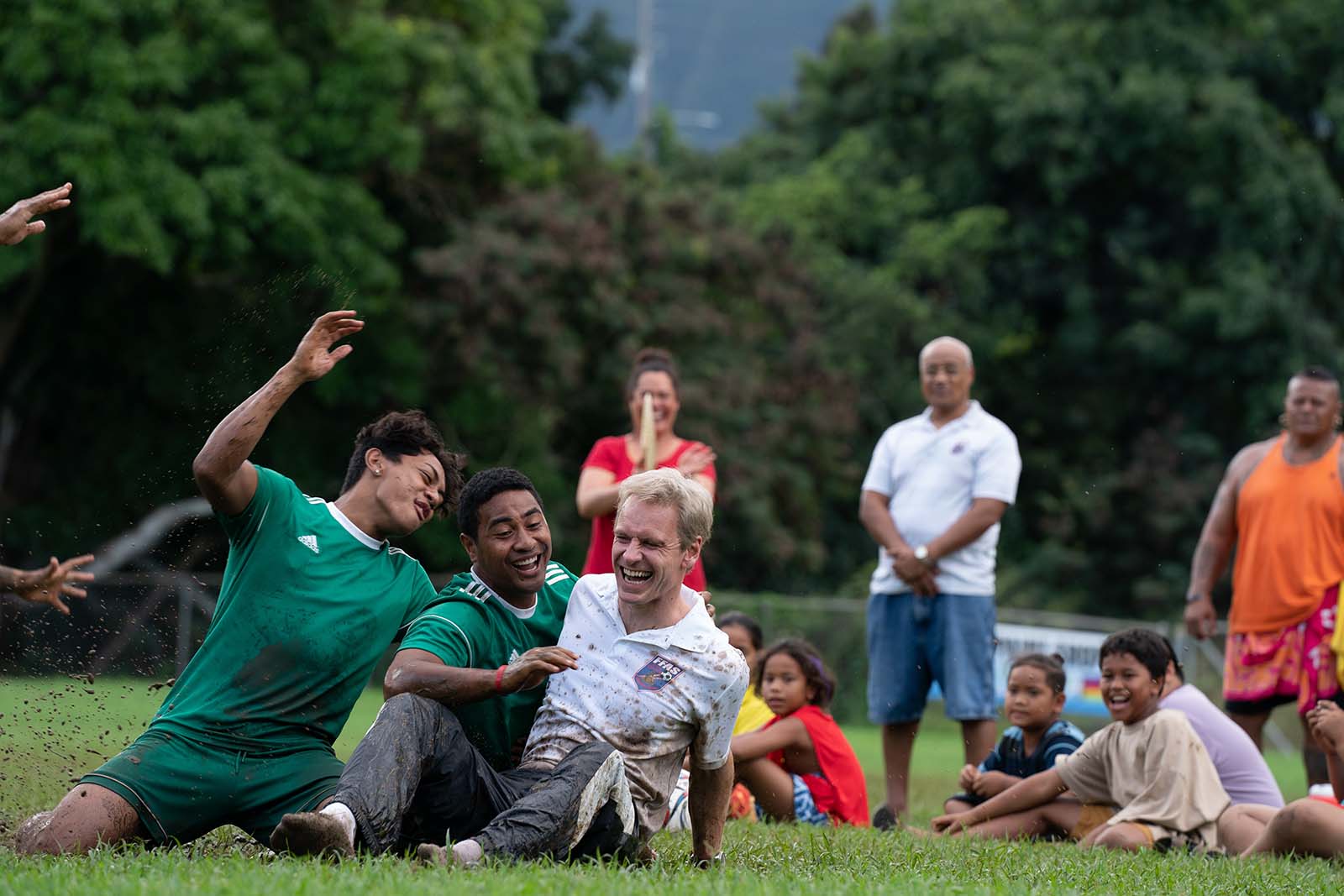
You see the tying goal, but then we flash forward to the son telling his father what happened. Then flashing forward further into the future to see the players as much older people telling the story to their children or grandchildren. Instead of this very traditional, big, glorious ending to the match, you do some interesting things structure-wise in how you tell the story. Tell me about how that all happened.
Tom Eagles, ACE: I can’t tell you too much about that because that wasn’t my work. The match worked well when I came on board. There are a couple of things that just sung, and one was the whole gameplay sequence and the other one was that locker room speech that I was talking about.
My role was to go back and earn all of that. I had to make sure the first half of the movie delivered. But kudos to Taika and the whole editing team who came before me for piecing that ending together. It really worked. And when something works, leave it alone. If it ain’t broke don’t fix it.

MF: You once compared Jeymes Samuel to Quentin Tarantino. You said they were both “black belt-level cinema nerds”. How does Taika compare with that? Is he big on giving reference points for his movies? Or does he say, “This is the material that I’ve written. This is where we’re staying and this is the story I’m trying to tell.”
Tom Eagles, ACE: He’s a big-time cinema nerd. He knows about different pockets of cinema that I know nothing about, like Korean cinema. There wasn’t a lot of talk about references. There were sports movie references for this film, but I didn’t want to make a typical sports movie. If anything, I was trying to make a more emotional movie. There wasn’t much studying of other films.
I didn’t want to make a typical sports movie.
Also, because I was just coming in for a pass, I had a fairly brief amount of time. I wasn’t trying to dig into all of the permutations of what a sports movie could be. As a sports movie, it was already working. It was the emotional story that I was doing more lifting on.
MF: You said that it was working as a sports movie, but you also have to make sure it’s working as a comedy and as an emotional story. Were you aware of any feedback from audiences that saw the screenings?
Tom Eagles, ACE: I’m not sure how much I can talk about audience scores and stuff like that, but it definitely bumped up when we found the emotional backbone of the film. It helped when we gave Thomas some dimension and wrote in those messages from his daughter. The film seemed to lift.
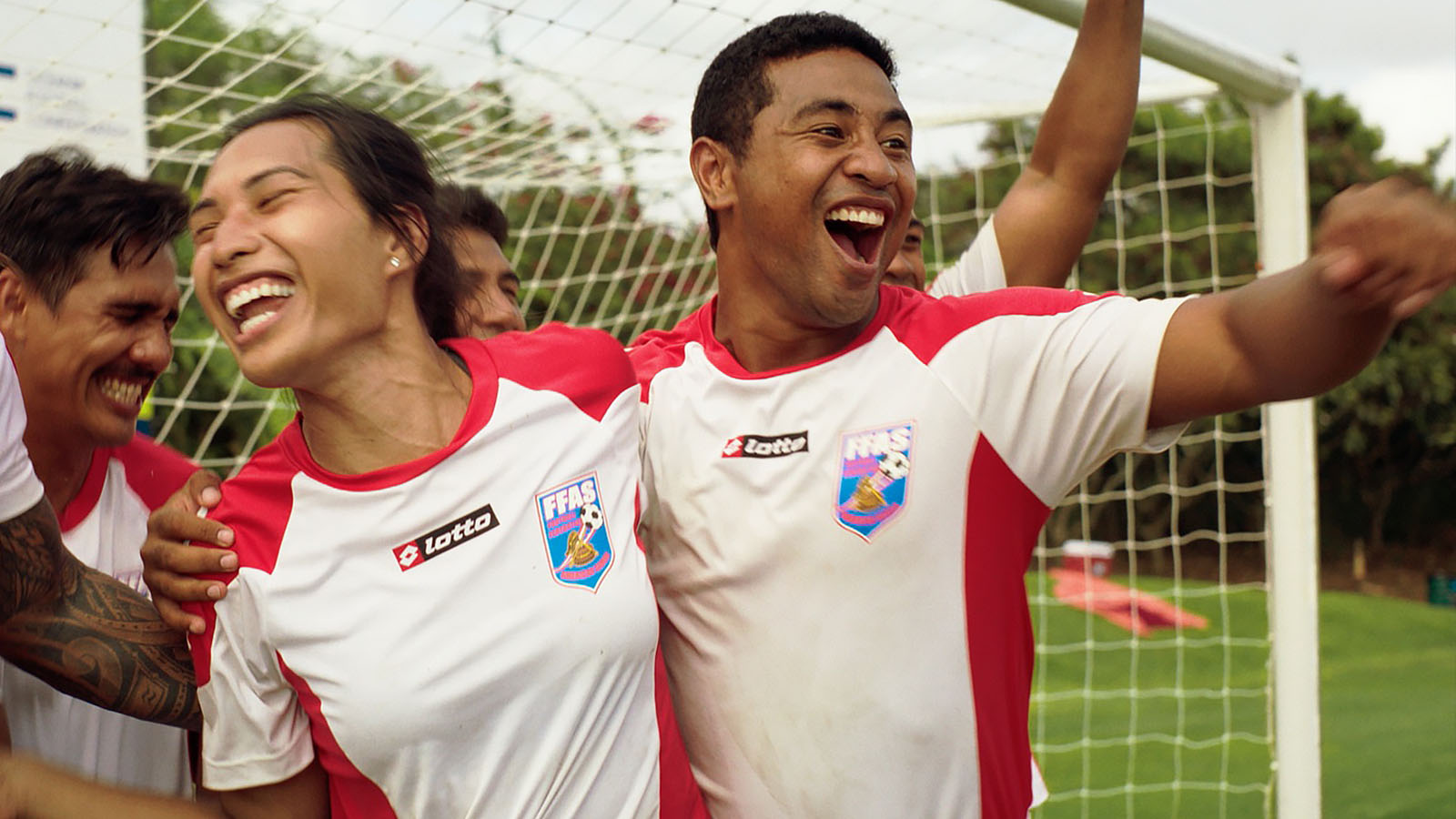
I’m not big on scores, but I am big on sitting in the room with an audience. You can feel it when it’s working and not working. With a comedy, it’s easy. They laugh or they don’t laugh. But if you’re lucky, you get a few gasps out of a story reveal. But if not, you can still feel whether it’s landing or not. The feedback was good. It was live in the room and in the moment.
MF: What is the origin story of you and Taika? If you are game, I’d love to hear it.
Tom Eagles, ACE: The first time I met Taika, he was in my house. He was sleeping on my couch. It was in those days of loose, wild partying. He was a dude who, in his early days, was making a lot of movies and doing his comedy and sleeping on a lot of couches. A lot of people probably have that story.
I got to know him through my wife, Danielle, who is a makeup and hair designer on a bunch of his movies from Boy through Jojo Rabbit. I met him while they were working together on Boy. They were hanging out around the house while they were prepping that movie. I wound up doing trailers for that movie, going to some screenings of it, and giving some notes. That was the first contact.
MF: Is there anything that’s changed in the way you and Taika work over these past ten years?
Tom Eagles, ACE: We probably talk less these days. I know his tone, which is not to say that it doesn’t switch up with every movie and evolve and grow, but it’s fairly shorthand these days.
The best way to do it is to just try things. I show him stuff and it sticks or it doesn’t, but there’s not much strategizing before we go into something. It’s very much, “Do you like it?” “Yes.” or “No, let’s try again.”
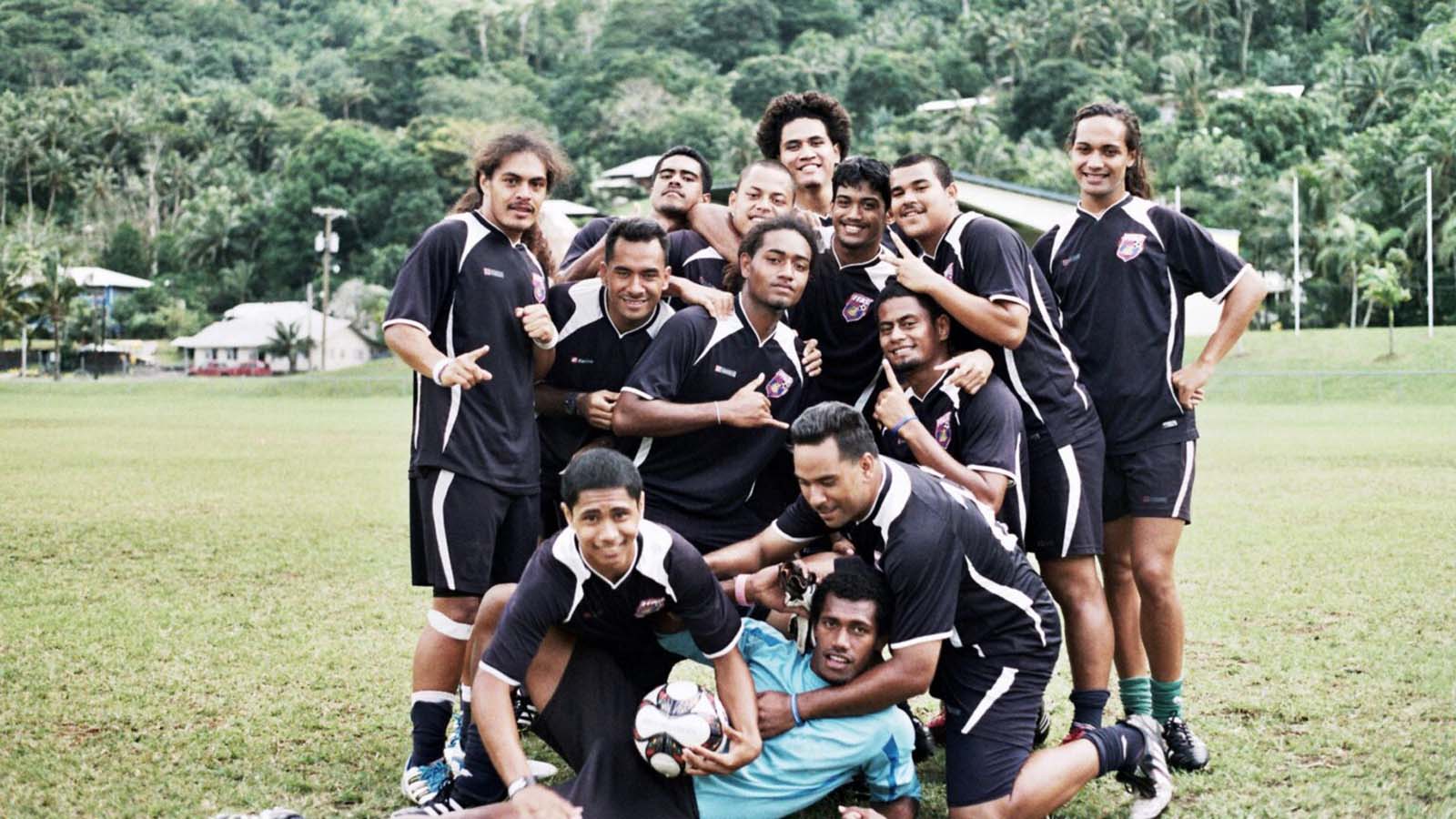
MF: I feel like every project you do, you should walk away learning something. Was there anything you’re taking away from doing Next Goal Wins? What did you learn on this project?
Tom Eagles, ACE: Man, I don’t know. I guess I learned that American Samoa is a territory of the United States. I don’t know.
MF: The American part didn’t tip you off?
Tom Eagles, ACE: I didn’t know what it was! I didn’t know if it was a state or not. It’s like Puerto Rico, right? I’m struggling to think of what I learned.
MF: I don’t think we want to turn this into a geography lesson. I don’t think either one of us would do very well.
Tom Eagles, ACE: No!

